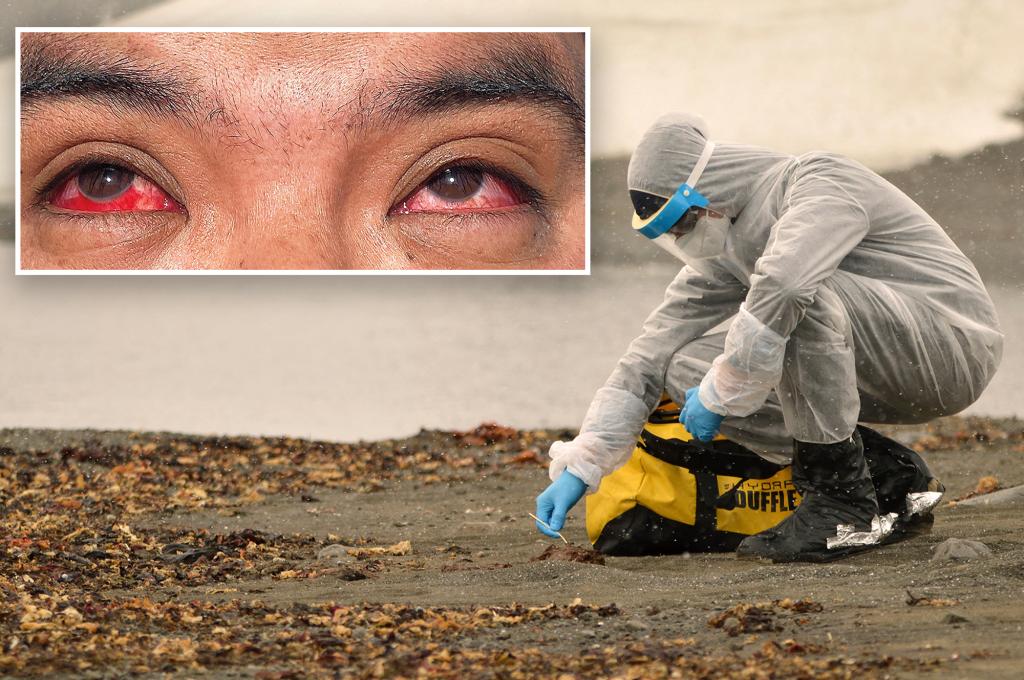A dairy worker in Texas was diagnosed with bird flu after experiencing painful bleeding in both eyes, with fluid oozing from one of them. The worker reported eye discomfort and redness after coming into contact with sick cattle exhibiting similar symptoms to cows in northern Texas diagnosed with the H5N1 virus. Doctors quickly diagnosed the worker with the bird flu strain Type A H5N1, which is spreading rapidly among livestock.
Doctors from the Centers for Disease Control and Prevention, who initially diagnosed the patient, released a photo showing the severe hemorrhaging in the patient’s bloodshot eyes. The right eye, which experienced fluid drainage, was especially red. The worker did not wear a face mask or eye protection when dealing with the sick animals. The virus seemed to infect only the worker’s eyes and fortunately did not spread to his lungs. The patient had no changes in vision, fever, or other symptoms, and the pinkeye cleared up within days.
The mild case of bird flu is not guaranteed, as some people do not show any noticeable symptoms while others can develop severe, life-threatening pneumonia. Since 2003, around 52% of humans who contracted H5N1 have died, raising concerns about further mutations. The patient was isolated and treated with an antiviral drug for the flu. Despite the infection, the CDC stated that the threat to the general public remains low, but those with close or prolonged exposure to infected birds or animals are at greater risk.
This case marked the second person in the US to contract the virus, following a week when dairy cows in Texas and Kansas tested positive for bird flu. Additional herds in Michigan, Idaho, and New Mexico have also been infected with the virus. In total, thirty-six dairy herds were affected as of Thursday. The first human infection occurred in 2022 when a prison inmate contracted the disease while working at a poultry farm in Colorado. It is the first time avian flu has been found in cattle, demonstrating the virus’s ability to infect a variety of mammals in recent years.
As the bird flu continues to spread among livestock, concerns about further mutations and severe pneumonia remain. The CDC emphasized the importance of protective measures when interacting with sick animals and stressed that the nation’s meat and dairy supply is not at risk. While some individuals may not show symptoms of H5N1, the potential for severe infection remains a concern. Increased surveillance and prompt treatment are crucial in identifying and containing future cases of bird flu to prevent further spread among both animals and humans.


